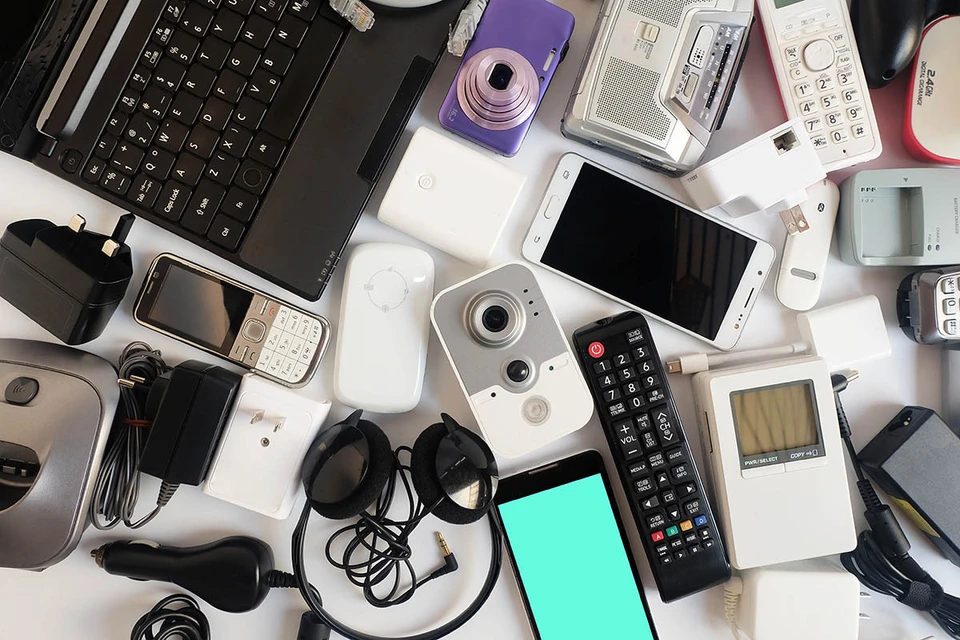In the modern digital age, electronics and gadgets play an essential role in everyday life, from communication and entertainment to work and productivity. Smartphones, laptops, televisions, and various accessories have revolutionized the way we interact with technology. This comprehensive guide explores different categories of electronics, their features, and how to choose the right gadgets based on needs and preferences.
Smartphones
Smartphones have become indispensable devices, providing access to communication, the internet, and countless applications that enhance daily life.
1. Types of Smartphones
Smartphones can be broadly categorized into:
- Flagship Phones – High-end devices with top-tier features and performance (e.g., iPhone Pro series, Samsung Galaxy S series).
- Mid-Range Phones – Balance between performance and affordability (e.g., Google Pixel A series, OnePlus Nord).
- Budget Phones – Affordable devices with basic features (e.g., Moto G series, Samsung Galaxy A series).
- Gaming Phones – Designed for mobile gaming with high refresh rates and powerful processors (e.g., ASUS ROG Phone, RedMagic series).
2. Key Smartphone Features to Consider
- Processor & RAM – Determines speed and multitasking ability.
- Display – OLED vs. LCD, refresh rates (60Hz to 144Hz).
- Battery Life – Measured in mAh; fast-charging capabilities.
- Camera System – Multiple lenses, night mode, optical zoom.
- Operating System – iOS vs. Android.
- 5G Connectivity – Faster internet speeds for future-proofing.
3. Best Smartphone Brands
- Apple (iPhone Series)
- Samsung (Galaxy S, Note, and A series)
- Google (Pixel Series)
- OnePlus
- Xiaomi (Redmi and Mi Series)
Laptops
Laptops provide portability and power for work, education, gaming, and creative tasks.
1. Types of Laptops
- Ultrabooks – Lightweight and powerful (e.g., Dell XPS, MacBook Air).
- Gaming Laptops – High-performance GPUs for gaming (e.g., Razer Blade, ASUS ROG, Alienware).
- Business Laptops – Secure and durable (e.g., Lenovo ThinkPad, HP EliteBook).
- Convertible/2-in-1 Laptops – Hybrid laptop-tablets (e.g., Microsoft Surface, Lenovo Yoga).
- Budget Laptops – Affordable and functional (e.g., Acer Aspire, Chromebook series).
2. Key Laptop Specifications
- Processor – Intel Core (i3, i5, i7, i9) or AMD Ryzen.
- RAM – 8GB (basic use), 16GB (multitasking), 32GB+ (professional use).
- Storage – SSD (faster) vs. HDD (cheaper, larger capacity).
- Graphics Card – Integrated (basic tasks) vs. Dedicated (gaming, design work).
- Battery Life – Important for portability (measured in Whr).
3. Best Laptop Brands
- Apple (MacBook Series)
- Dell (XPS, Inspiron, Alienware)
- HP (Spectre, Pavilion, Envy)
- Lenovo (ThinkPad, Yoga, Legion)
- ASUS (ZenBook, ROG, VivoBook)
Televisions (TVs)
Televisions have evolved significantly, offering smart features, high-definition displays, and seamless integration with streaming services.
1. Types of TVs
- LED TVs – Standard backlit display.
- OLED TVs – High contrast and vibrant colors.
- QLED TVs – Quantum dot technology for enhanced brightness.
- 4K UHD TVs – High resolution for better clarity.
- 8K TVs – Future-proofing with ultra-high definition.
- Smart TVs – Internet-enabled with streaming apps.
2. Key Features to Consider
- Screen Size – Measured in inches, based on room size.
- Resolution – 1080p (Full HD), 4K, or 8K.
- Refresh Rate – 60Hz, 120Hz, 144Hz for smooth motion.
- HDR Support – HDR10, Dolby Vision for better contrast.
- Smart Capabilities – Built-in apps like Netflix, YouTube, Disney+.
3. Best TV Brands
- Samsung
- LG
- Sony
- TCL
- Hisense
Accessories
Accessories enhance the functionality and usability of electronic devices.
1. Smartphone Accessories
- Wireless Earbuds – Apple AirPods, Samsung Galaxy Buds, Sony WF series.
- Power Banks – Portable charging solutions (10,000mAh – 30,000mAh).
- Phone Cases & Screen Protectors – For durability and protection.
- Smartwatches – Apple Watch, Samsung Galaxy Watch, Garmin.
2. Laptop Accessories
- External Monitors – Additional screen space for productivity.
- Keyboards & Mice – Wireless and ergonomic options.
- Docking Stations – Expanding laptop connectivity.
- Cooling Pads – Prevents overheating in gaming and work laptops.
3. TV Accessories
- Streaming Devices – Chromecast, Roku, Amazon Fire Stick.
- Soundbars & Home Theater Systems – Enhanced audio quality.
- Wall Mounts & Stands – Optimal viewing angles.
4. Gaming Accessories
- Gaming Headsets – Razer, Logitech, HyperX.
- Controllers – Xbox, PlayStation DualSense, Nintendo Switch Pro.
- Mechanical Keyboards & Gaming Mice – Razer, Corsair, SteelSeries.
- VR Headsets – Oculus Quest, HTC Vive, PlayStation VR.
Emerging Trends in Electronics & Gadgets
Technology continues to advance, bringing new innovations to consumer electronics.
1. Artificial Intelligence (AI) Integration
- AI Assistants – Siri, Google Assistant, Alexa.
- Smart Home Devices – AI-powered security cameras, smart thermostats.
2. Foldable and Dual-Screen Devices
- Samsung Galaxy Fold, Microsoft Surface Duo.
3. 5G Connectivity
- Faster speeds, improved network reliability.
4. Sustainable Technology
- Eco-friendly materials and energy-efficient devices.
How to Choose the Right Electronics & Gadgets
To make the best purchasing decision, consider the following:
1. Define Your Needs
- Identify what you require the device for (e.g., work, entertainment, gaming).
2. Compare Specifications
- Look at features, performance, and price comparisons.
3. Read Reviews
- Check expert and user reviews for real-world performance insights.
4. Consider the Brand Reputation
- Established brands generally offer better quality and support.
5. Check Warranty and After-Sales Service
- Ensure the product has good customer support and warranty coverage.
Conclusion
Electronics and gadgets have become an integral part of modern life, improving efficiency, entertainment, and connectivity. Whether choosing a smartphone, laptop, TV, or accessories, understanding the key features and emerging trends can help consumers make informed decisions. By staying updated with the latest technological advancements, one can invest in devices that offer the best value and long-term usability.






